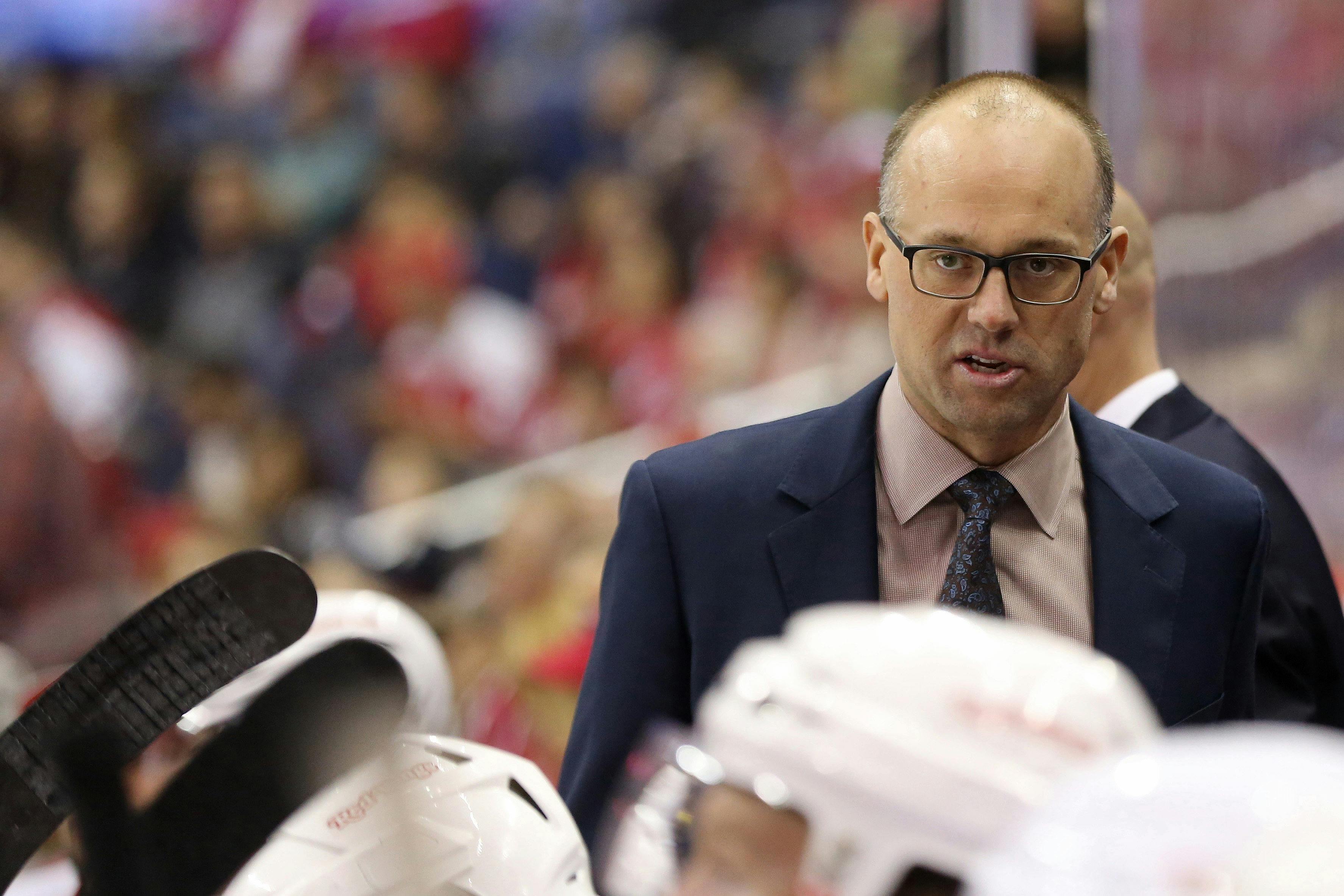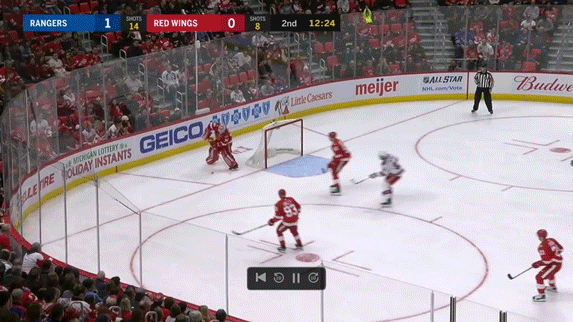Breaking Down “The Process”

By Nick Seguin
6 years agoIt really kicked into high gear a little over three weeks ago. In response to reporters’ questions about a 3-2 loss to the Boston Bruins on December 13, a game in which the Wings played exceptionally well, Jeff Blashill’s answer was for his team to “keep trusting process”.

It wasn’t the first time we had heard the word, but this time it prompted the Detroit News to associate its use with the sound of the Internet exploding. Regardless, Blashill continued to tout “the process” in post-game pressers and post-practice interviews.
He used it so much that it’s even made its way into the players’ vocabulary. In post-game interviews after their 2-1 overtime victory against the Ottawa Senators on Tuesday night, two players brought it up.
“There was no panic in our game, no deflation, when they scored that early goal in the third period and we stuck to the process and got a quick one in overtime,” Dylan Larkin said.
“The process?” Jimmy Howard asked, prompting laughter from the crowd, when questioned about playing in a structure and sticking with a gameplan.
I’m not sure why it took me so long, but after hearing players bring it up twice in the same media scrum, I became seriously curious. What exactly is this “process” that’s being talked about ad nauseum? Can it be put into words? Turns out that it can.
After the Wings’ 3-1 victory over the Toronto Maple Leafs on December 15th, Blashill was asked point blank about “the process”. Let’s have a look at how he defined it and then I’ll break it down, point-by-point.
THE DEFINITION
For those who can’t watch the video, I’ve transcribed the question and answer below it.
Reporter: I know you use the word “process” a lot. Can you define what you mean by that?
Blashill: Well… I mean…It’s a… It would be a big definition, I guess. Uh, you know, here’s the thing, here’s the thing. You talk to my wife, she’d tell you I’m really long-winded so we could be here for a while.
It’s managing the puck. For us, it’s managing the puck. It’s getting on people with great pressure. It’s playing fast coming up the ice and using our speed and putting other teams on their heels. And doing it right shift-by-shift. You know, I’ve got a thing. Every shift we have to out-work, out-compete, and out-detail our opponent. So that’s, to me, the process of it.
THE BREAKDOWN
After a 16 second hesitation period where a stuttering Blashill fidgets with the table in front of him, buying time to come up with words for an idea that he’s never had to vocalize in this forum, he gets into the meat and potatoes of it.
There are five steps behind Blashill’s process:
- Managing the puck.
- Getting on people with great pressure.
- Playing fast coming up the ice.
- Using our speed and putting other teams on their heels.
- Doing it right shift-by-shift
So let’s go through these, step-by-step to see what they really mean.
Managing the puck.
This, to me, is all about possession. Controlling the flow of play can only be done when you have the puck, and what you do with that time can determine how good of a shift you have. For example, do you pass around the perimeter, only shooting when you have a clear lane? Or do you shoot into the crowd? Or maybe you’re trying to work the puck into the slot to create a more dangerous scoring chance. These are all examples of managing the puck. It requires clean tape-to-tape passing and the strength to protect the puck when it’s vulnerable.
Managing the puck is an important part of controlling a hockey game, but they can only manage it if they have it on their sticks. Part of this step is also about about recovering the puck when they don’t have it and that’s where step number two comes in.
Getting on people with great pressure.
This one is a little self-explanatory, but to me it’s about playing with urgency and therefore creating urgency in your opponents. When the puck is on the opponent’s stick, get on them and force them to make a play. This is how you create turnovers. Turnovers lead to puck possession. See how these two steps talk to each other?
But it’s not only about pressure on the puck carrier, they need to create pressure on whoever the puck is going to go to next. That means battling in front of the net and covering the point. When great pressure is applied on the opposition, they will eventually cough the puck up and you can transition to offense, which is where step three comes in.
Playing fast coming up the ice.
Recovering the puck in your own zone means you’ve got a long way to go before you can put that puck on net. The first step is the zone exit, then it’s playing through the neutral zone, before finally entering the offensive zone. If you want to get the jump on your opponents in today’s NHL, this whole transition needs to be done with speed. Short, quick passes out of the defensive end and through the neutral zone, always moving your feet to keep the pace high.
The important part of this step is using your brains as much as your legs. We see players turning over the puck all the time when they are trying to transition out of their zone in a rush. In order to play the game fast, you need to think the game fast and trust your teammates to be on the same page.
Using our speed and putting other teams on their heels.
Speaking of speed, Detroit has a lot of speed in their lineup and Blashill wants to unleash it. There can’t be any coasting on the ice because when you coast, you allow your opponents to regroup and get the jump on you. Playing fast every time you’re on the ice keeps you competitive throughout the course of a game.
Blashill has some of the fastest skater in the league on his bench and he wants to use their speed to the team’s advantage. Catching the opposition flat-footed and wearing them out in their own zone are two keys to achieving success with this step. It requires a lot of energy, stamina, and mental fortitude.
Doing it right shift-by-shift.
Step five is basically repeating steps one to four over and over again. One good shift where all of these little details are done right is not going to win a game. It needs to be done every shift of every game, especially when your roster is devoid of elite talent the way that Detroit’s is. In Blashill’s eyes, veering away from the process will lead to clumsy defense and more goals against, eventually leading to more losses. So every shift, he wants them to grind out the process.
WHAT DOES THE PROCESS LOOK LIKE?
Andreas Athanasiou’s goal against the Rangers on December 29th was a great example of Blashill’s process.

Trevor Daley and Tomas Tatar apply great pressure against the boards, leaving the Rangers player nothing to do but try to center the puck. Except it lands right on Dylan Larkin’s stick. Daley continues to apply pressure on the Rangers player to create more space for Larkin, who protects the puck (managing the puck) and flips it high from the defensive zone to the offensive zone (playing fast coming up the ice), creating a foot race that Athanasiou wins (using our speed and putting other teams on their heels) and then uses his strength to manage the puck and fire it over Lundqvist’s left shoulder.
That’s how all of these little details come together to give the Red Wings the edge. That’s why Blashill wants them sticking to the process.
PERFORMANCE OVER RESULTS
The reason Blashill keeps bringing the process up is because he feels that lately, the Wings have been sticking by it, even though the results don’t always show it. Here’s the second half of his quote on the definition of the process:
So basically, judge the performance more than the result?, the reporter asks.
“Correct.”
CONCLUSION
I found digging into Blashill’s explanation gave me a much deeper understanding of what the hell he was talking about when he mentioned the process. In his words, it’s about out-working (i.e. playing fast coming up the ice and using speed), out-competing (i.e. applying great pressure), and out-detailing (i.e.managing the puck) the opponent on every shift.
These may seem like fundamental pieces to a hockey game and that’s because they are. The Wings need to get these little details right on a consistent basis if they want to remain competitive. So if the Wings are executing the process game in and game out, does that mean they’ll start winning more games than they’re losing? Will it give them a shot at that coveted playoff spot? I guess they’ll have to trust the process to find out.
Recent articles from Nick Seguin





